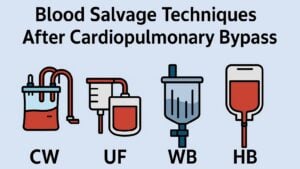Background: The impact of the chronological sequence of events, including cardiac arrest (CA), initial cardiopulmonary resuscitation (CPR), return of spontaneous circulation (ROSC), and extracorporeal cardiopulmonary resuscitation (ECPR) implementation, on clinical outcomes in patients with both out-of-hospital cardiac arrest (OHCA) and in-hospital cardiac arrest (IHCA), is still not clear. The aim of this study was to investigate the prognostic effects of the time interval from collapse to start of CPR (no-flow time, NFT) and the time interval from start of CPR to implementation of ECPR (low-flow time, LFT) on patient outcomes under Extracorporeal Membrane Oxygenation (ECMO).
Methods: This single-center, retrospective observational study was conducted on 48 patients with OHCA or IHCA who underwent ECMO at Hamad General Hospital (HGH), the tertiary governmental hospital of Qatar, between February 2016 and March 2020. We investigated the impact of prognostic factors such as NFT and LFT on various clinical outcomes following cardiac arrest, including 24-hour survival, 28-day survival, CPR duration, ECMO length of stay (LOS), ICU LOS, hospital LOS, disability (assessed using the modified Rankin Scale, mRS), and neurological status (evaluated based on the Cerebral Performance Category, CPC) at 28 days after the CA.
Results: The results of the adjusted logistic regression analysis showed that a longer NFT was associated with unfavorable clinical outcomes. These outcomes included longer CPR duration (OR: 1.779, 95%CI: 1.218-2.605, P = 0.034) and decreased survival rates for ECMO at 24 h (OR: 0.561, 95%CI: 0.183-0.903, P = 0.009) and 28 days (OR: 0.498, 95%CI: 0.106-0.802, P = 0.011). Additionally, a longer LFT was found to be associated only with a higher probability of prolonged CPR (OR: 1.818, 95%CI: 1.332-3.312, P = 0.006). However, there was no statistically significant connection between either the NFT or the LFT and the improvement of disability or neurologically favorable survival after 28 days of cardiac arrest.
Conclusions: Based on our findings, it has been determined that the NFT is a more effective predictor than the LFT in assessing clinical outcomes for patients with OHCA or IHCA who underwent ECMO. This understanding of their distinct predictive abilities enables medical professionals to identify high-risk patients more accurately and customize their interventions accordingly.
Keywords: Cardiac arrest; Cardiopulmonary resuscitation; Extracorporeal circulation; Extracorporeal membrane oxygenation out-of-hospital cardiac arrest; In-hospital cardiac arrest; Prognosis.







